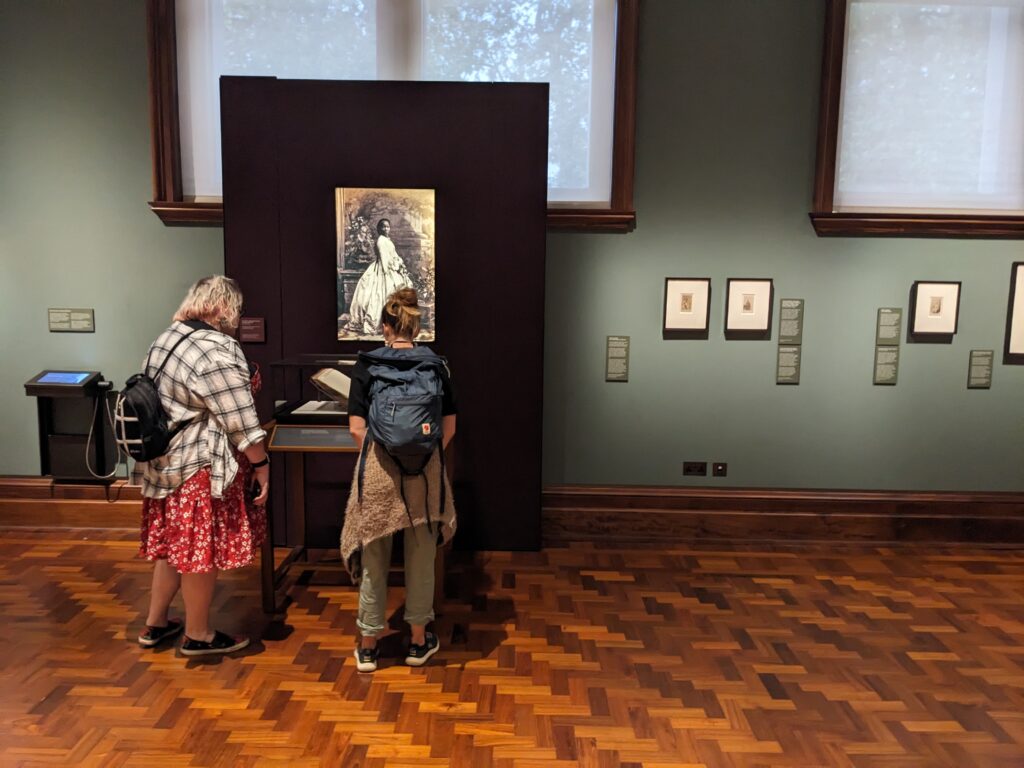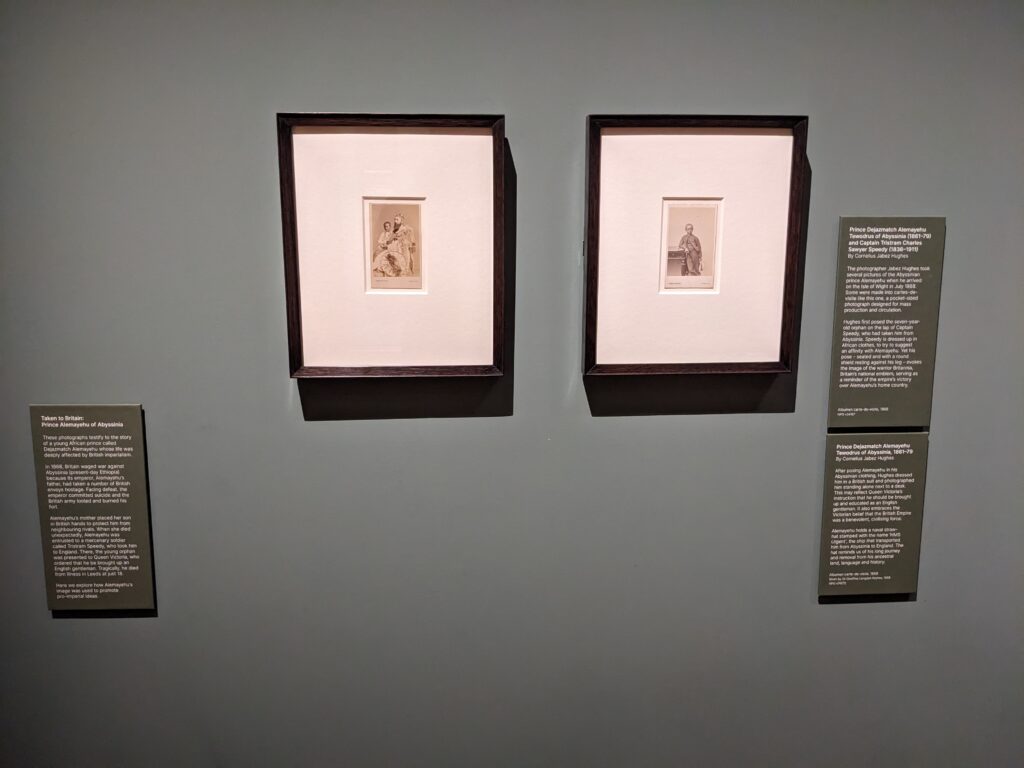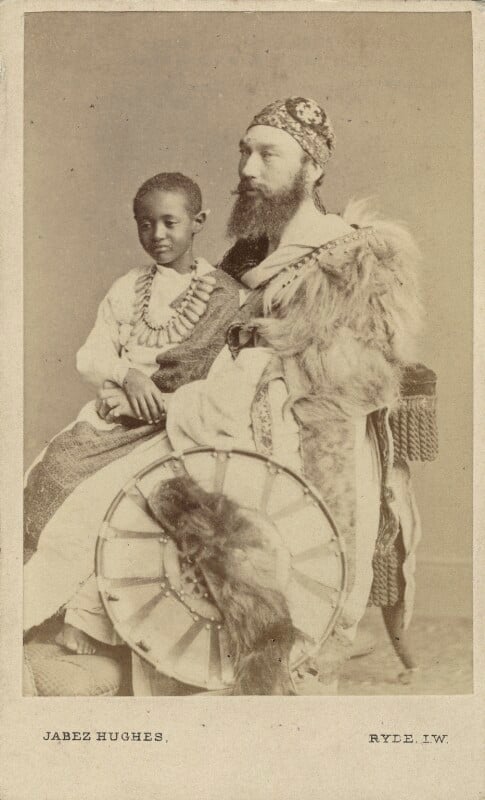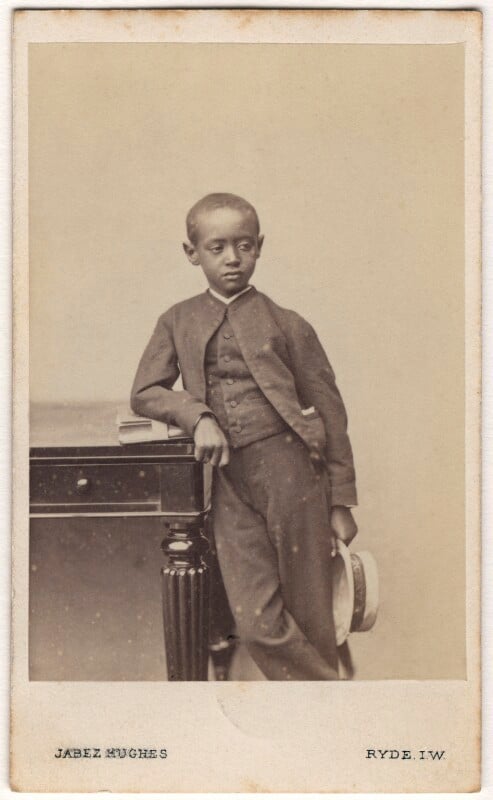In 2023, the National Portrait Gallery in London included two of its carte-de-visite protraits of Alemayehu in a rotating display in its Room 23, a gallery focussed on “Empire and Resistance”.


The introductory caption on the left read: “Taken to Britain: Prince Alemayehu of Abyssinia
“These photographs testify to the story of a young African prince called Dejazmatch Alemayehu whose life was deeply affected by British imperialism.
“In 1868, Britain waged war against Abyssinia (present-day Ethiopia) because its emperor, Alemayehu’s father, had taken a number of British envoys hostage. Facing defeat, the emperor committed suicide and the British army looted and burned his fort.
“Alemayehu’s mother placed her son in British hands to protect him from neighbouring rivals. When she died unexpectedly, Alemayehu was entrusted to a mercenary soldier called Tristram Speedy, who took him to England. There, the young orphan was presented to Queen Victoria, who ordered that he be brought up an English gentleman. Tragically, he died from illness in Leeds at just 18.
“Here we explore how Alemayehu’s image was used to promote pro-imperial ideas.”
The portrait on the left is titled “Prince (Dejatch) Alamayou of Abyssinia (Prince Alemayehu Tewodros of Ethiopia); Tristram Charles Sawyer Speedy” in the Gallery collection.

In the gallery, it was captioned: “Prince Dejazmatch Alemayehu Tewodrus of Abyssinia (1861-79) and Captain Tristram Charles Sawyer Speedy (1836-1911) By Cornelius Jabez Hughes
“The photographer Jabez Hughes took several pictures of the Abyssinian prince Alemayehu when he arrived on the Isle of Wight in July 1868. Some were made into cartes-de-visite like this one, a pocket-sized photograph designed for mass production and circulation.
“Hughes first posed the seven-year-old orphan on the lap of Captain Speedy, who had taken him from Abyssinia. Speedy is dressed up in African clothes, to try to suggest an affinity with Alemayehu. Yet his pose – seated and with a round shield resting against his leg – evokes the image of the warrior Britannia, Britain’s national emblem, serving as a reminder of the empire’s victory over Alemayehu’s home country.
“Albumen carte-de-visite, 1868 – NPG x34167”
The portrait to the right is titled “Prince (Dejatch) Alamayou of Abyssinia (Prince Alemayehu Tewodros of Ethiopia)” in the Gallery collection.

In the gallery, it was captioned: “Prince Dejazmatch Alemayehu Tewodrus of Abyssinia, 1861-79 By Cornelius Jabez Hughes
“After posing Alemayehu in his Abyssinian clothing, Hughes dressed him in a British suit and photographed him standing alone next to a desk. This may reflect Queen Victoria’s instruction that he should be brought up and educated as an English gentleman. It also embraces the Victorian belief that the British Empire was a benevolent, civilising force.
“Alemayehu holds a naval straw-hat stamped with the name ‘HMS Urgent’, the ship that transported him from Abyssinia to England. The hat reminds us of his long journey and removal from his ancestral land, language and history.
“Albumen carte-de-visite, 1868
“Given by Sir Geoffrey Langdon Keynes, 1958 – NPG x74572”
Leave a Reply